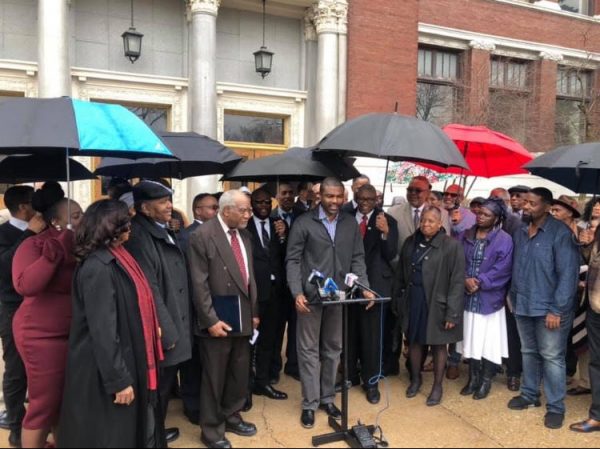State prison officials say “second chance” funding from the federal government has enabled them to help more than 300 people from Austin and six other communities reenter society after being incarcerated.
U.S. Rep. Danny K. Davis said he hopes to build on that funding provided through the Second Chance Act.
“We are celebrating the accomplishments that have been made,” Davis said at a press conference earlier this month held to commemorate the 11th anniversary of the federal legislation being signed into law.
“We are also acknowledging that there is a long way to go,” said Davis, who was the law’s chief sponsor.
Davis said there are 70 million people in the U.S. with criminal backgrounds who are capable of working but face a number of barriers in finding a job – and those barriers have only grown over the last decade. He noted there are many businesses that will not hire someone will a felony conviction.
Illinois was one of six states to receive a Second Chance Act Recidivism Reduction Award; Illinois received about $2.5 million over a multi-year period for planning a statewide recidivism reduction strategy. The goal is to create state centers of excellence to serve as national models for how to effectively reduce recidivism.
Gladyse Taylor, assistant director of the Illinois Department of Corrections, said data from the department shows about a 10% increase in sustainable employment for those impacted by the grant.
In all, nearly $1 billion has been allocated through the Second Chance Act over the last 11 years to help communities receiving ex-offenders back into society.
“Other states have been given more money, so [we] want to make sure the message gets out to our agencies in Illinois, so they are aware of the grants available and what they should be doing to qualify,” said state Rep. La Shawn Ford.
Ford said he has been working with Congressman Davis to advance legislation in Illinois to reduce barriers still making it hard for ex-cons to reintegrate into society.
Taylor said the corrections department will continue to improve training and realigning their programs. An evaluation done of 18 IDOC programs working on recidivism reduction showed which programs are working and which ones are not. She said the goal is to replace or retool existing programs to ensure there is a continuation of activities for people who are incarcerated.
“It’s not easy, it’s not like you can wipe the slate clean and turn around and say, ‘Now we’re deploying evidence-based programs,’” Taylor said.
She said it’s important to remember there’s not just one solution. Taylor added that she has spoken with a number of Austin residents who said they have benefited from pre-release and/or post-release services.
“When there is an opportunity for communities to make improvements in public safety and to overall produce a positive change, Second Chance is very supportive of those efforts, and I hope the funding from a federal level continues,” Taylor said.
Rep. Ford said it is very difficult to get people to support this kind of legislation. That needs to change, he and others say.
“People are changing their attitude towards people who have criminal records or have been convicted,” Davis said. “… There is still much more to do.”
